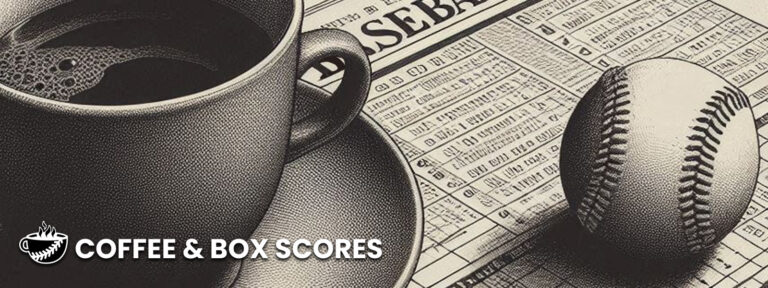Among all the players who began and ended their careers within the confines of the Divisional Era (since 1969), 11 of them furnished the following lines: at least 5,000 plate appearances, a .300 (or better) batting average and more walks than strikeouts. Four members of the very special .300/.400/.500 club* populate this 11-man list – Edgar Martínez, Frank Thomas, Chipper Jones and Todd Helton. A pair of single-franchise icons (and associates in the 3,000-hits club) also appear: George Brett and Tony Gwynn. Two other representatives of the one-and-only-one-franchise coterie, Don Mattingly and Mike Greenwell, are part of the contingent, as is another 3,000-hits member, Wade Boggs. Four-time batting champ Bill Madlock hit these marks, as did “most hits in the 1990s” guy, Mark Grace. It’s a fun assortment of names and career narratives, all banded together by the trio of statistical specificities.
*(20 players in history have ended their careers with at least 5,000 plate appearances and a .300/.400/.500 slash line. Aside from the quartet already mentioned, the rest of the body: Dan Brouthers, Ed Delahanty, Ty Cobb, Tris Speaker, Joe Jackson, Harry Heilmann, Babe Ruth, Rogers Hornsby, Lou Gehrig, Jimmie Foxx, Mel Ott, Hank Greenberg, Ted Williams, Stan Musial, Larry Walker and Manny Ramírez.)
Barring some sort of comics-superhero transformation, Padres infielder Luis Arráez isn’t going to join the aforementioned slash club. But the other collection is in play. Through his first six seasons, the three-time batting champ (in 2022, 2023 and 2024) owns a .323 average as the highlight-y companion to 196 walks and 194 strikeouts. Sure, the BB:K ratio is tenuously balanced in favor of the free passes and that batting mark still needs to be tested against many more trips to the dish (he has 2,858 plate appearances), but the currency of his profile and where it has placed him affords us an intriguing pathway to celebrate his peculiarity in today’s environment. It’s also straightforward, as so much of his comparative stature comes from one of the foundational components to the game – how often a batter can take a swing, connect and reach base safely.
Arráez’s three batting crowns before entering his age-28 season link him with just six others to accomplish that feat. Ty Cobb had eight by that point, Rogers Hornsby had four, and these other champs join Arráez in the “three-times” slot: Stan Musial, Rod Carew, Joe Mauer and Jose Altuve.
In 2024, Arráez became the first batter since Miguel Cabrera from 2011-2013 to claim three straight batting average belts. Additionally, he’s the first to enter his age-28 season with at least 2,000 plate appearances and a lifetime average of at least .323 since Mauer and Albert Pujols.
These associations might inspire awe, but most don’t really generate a lot of meaningful parallels with the defending NL batting champ. For example, Pujols (third), Musial (fourth), Cabrera (14th) and Cobb (16th) are in the top-20 in career extra-base hits, while over the past three seasons, Arráez has accumulated an extra-base hit tally that ties for the 104th most in the Majors. Similarly, Hornsby led the NL in slugging percentage nine times (the most ever for the Senior Circuit); in 2023, Arráez posted his highest mark in a season (.469), which was good enough for 23rd in the NL that year. No, to present a more exacting likeness, additional tones – besides batting average acumen – must be layered onto the portrait. And this is where Arráez’s uncanny predilection for putting the ball in play (without a lot of pop) enters the machinery. Among the various pathways to explore, here’s a couple.
(1)
Let’s look at Arráez’s past two batting titles, starting with the 2024 campaign that produced a .314 average and walk and strikeout rates below five percent. In the modern era, five different players have posted the AL or NL’s highest average while maintaining walk and strikeout rates on par with Arráez’s. Most of the seasons occurred before Babe Ruth stopped pitching: Nap Lajoie in 1901, 1903 and 1904, Larry Doyle in 1915, Edd Roush in 1917 and Zack Wheat in 1918. The only other submission before Arráez that fits this bill came from Bill Buckner in 1980.
In 2023, Arráez batted .354 with walk and strikeout rates below six percent. Where to find others like this? A long time ago.
Since 1901: Batting Titleists, .350+ Average, Walk and Strikeout Rates at or Below Six Percent
1901 Nap Lajoie
1904 Nap Lajoie
1926 Heinie Manush
1940 Debs Garms
2024 Luis Arráez
(2)
In NL-AL history*, there are six players to carry a line matching these elements of Arráez’s: through an age-27 season, at least 2,000 plate appearances, a batting average of at least .320 and walk, strikeout and extra-base hit rates at or below seven percent.
| Player | Years | BA | Walk% | Strikeout% | XBH% |
| Hughie Jennings | 1892-1896 | .323 | 4.53 | 3.13 | 6.27 |
| Willie Keeler | 1892-1899 | .384 | 5.83 | 1.17 | 5.80 |
| Ginger Beaumont | 1899-1904 | .325 | 6.56 | 4.88 | 4.82 |
| Edd Roush | 1913-1920 | .323 | 5.52 | 3.75 | 6.34 |
| Lloyd Waner | 1927-1933 | .332 | 4.96 | 2.26 | 5.45 |
| Luis Arráez | 2019-2024 | .323 | 6.86 | 6.79 | 6.33 |
*(Things get a little weird in this picture: Jennings’ 1891 season is not part of the calculation, as he was playing in the American Association. Likewise, Roush’s 1914 and 1915 seasons – when he was playing in the Federal League – are not considered).
This list, it’s kind of like seeing a daguerreotype of Alexander Graham Bell with an iPhone or an image of Tim Cook speaking into a box telephone. The overlay of modern atop the past is not exactly jarring, just kind of delightful in seeing and then pondering the connections. Here’s Arráez, looking to become the first player since Tony Gwynn to claim four straight batting titles, skipping across decades and transformations in the game to unite with three men who got started in the 19th century, one who once pinch-hit for Christy Mathewson and another who opposed Babe Ruth and Lou Gehrig in the World Series. He embodies an approach and execution in the batter’s box that’s lain mostly dormant for decades, a revisitation to a version of the game where this type of hitting profile could lead to immortality (of the group above, Jennings, Keeler, Roush and Waner all have plaques in Cooperstown).
The three-time All-Star has done so much more than establish himself as a batting average barometer in the current game; via a stand-out-from-the-rest passport, he’s managed to do it while traveling to the long ago and returning with an artifact of accomplishment.
Thanks to Baseball Reference and its extraordinary research database, Stathead, for help in assembling this piece.

Roger Schlueter
As Sr. Editorial Director for Major League Baseball Productions from 2004-2015, Roger served as a hub for hundreds of hours of films, series, documentaries and features: as researcher, fact-checker, script doctor, and developer of ideas. The years at MLB Production gave him the ideal platform to pursue what galvanized him the most – the idea that so much of what takes place on the field during the MLB regular and postseason (and is forever beautifully condensed into a box score) has connections to what has come before. Unearthing and celebrating these webs allows baseball to thrive, for the present can come alive and also reignite the past.


